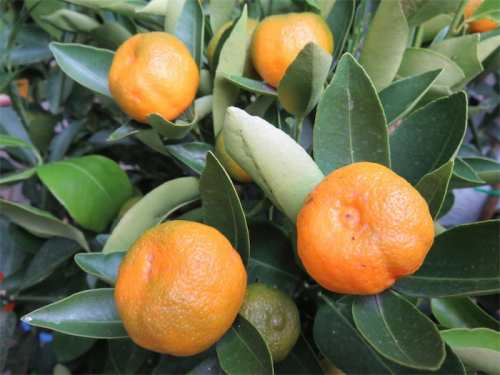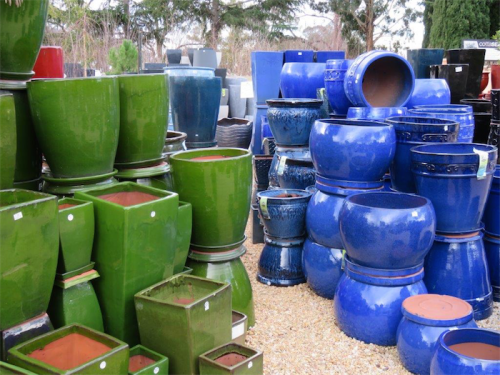
This doesn’t mean the fruit is small, only that the trees are grafted on to dwarf rootstock.
Dwarf fruit trees in containers require full sun most of the day, preferably in an area with good air circulation.
Citrus trees are ideal for growing in pots and this has been a traditional way of growing citrus in Britain and Europe for several hundred years. In fact special, heated buildings or orangeries were constructed where the citrus in pots were moved to in winter.
Dwarf Meyer Lemon and kumquats are especially suitable for pot culture.
Apples Gala, Granny Smith, Golden Delicious, Pink Lady and Red Fuji are all available in dwarf form.
Fleming’s Trixzie miniature peach is a delightful small tree with delicious, yellow-fleshed, full-size peaches and the Victorian nursery’s Trixzie Black Cherree is the first truly dwarf cherry for home gardeners. It is reported to be self-fertile and doesn’t need another cherry tree to cross-pollinate.
The dwarf Trixzie Nectazee is a good way to grow nectarines in a container; a semi-freestone variety, it has good-flavoured, yellow flesh.
Or there’s a cross between a nectarine and a peach, Spicezee Interspecific Nectarine, a white-fleshed freestone with a great flavour.
All can be planted directly into the ground if you have a small garden.

When plants die in a container that curves in at the top, it is almost impossible to get the plant and its established root system out without smashing the pot.
Forget saucers under containers, they inhibit drainage and encourage root rot.
Always raise containers off the ground. For pots in garden beds, broken bricks or pavers will do. On a paved area, feet made especially to match the pots might look better.
YATES, Australia’s largest seed producer, historically sold three quarters of its seed for flowers and one quarter for veggies. This trend has reversed with more people looking for organic seed when growing their own vegetables (in addition to using only organic fertilisers).
Organic seeds are not easy to obtain. However, the Diggers Club in Victoria, founded by Clive and Penny Blazey in 1978, is a mine of information for gardeners. It’s at diggers.com.au
Jottings…
- Don’t cut off frost-damaged leaves from plants at this time. They help protect the leaves underneath from further frost damage.
- Prune kiwi fruit.
- Sand back and apply linseed oil to preserve wooden handles on tools.
- Paint small garden hand tools bright orange to make them easier to find when lost in the garden.
Who can be trusted?
In a world of spin and confusion, there’s never been a more important time to support independent journalism in Canberra.
If you trust our work online and want to enforce the power of independent voices, I invite you to make a small contribution.
Every dollar of support is invested back into our journalism to help keep citynews.com.au strong and free.
Thank you,
Ian Meikle, editor




Leave a Reply